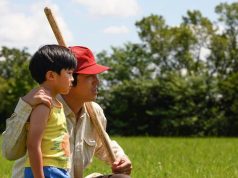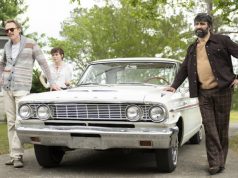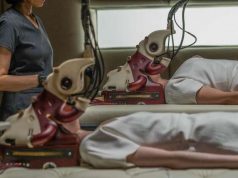As with most documentaries, “Ballets Russes” is probably more fascinating if you’re already interested in the subject matter. But unlike many of its peers, the film doesn’t assume we revere its subject as much as the filmmakers do. Instead, directors Daniel Geller and Dayna Goldfine lay out the history of the Ballet Russe, delight us with modern interviews with the now-ancient ballerinas, and take our breath away with clip after clip of footage of the dancers in their prime. When it’s done, ballet fans or not, we can’t help but appreciate the story we’ve just seen.
A man named Diaghilev died in 1929, and many feared that spelled the end for the Ballets Russes, the highly esteemed Russian dance company he had overseen. But a worthy successor was found in the Ballet Russe de Monte Carlo, which opened in 1932 and went on to achieve the kind of legendary fame that its predecessor had.
That group eventually split into two factions, with artistic director and choreographer Leonide Massine breaking off and starting his own troupe, taking many of the dancers — and, somehow, the name Ballet Russe de Monte Carlo — with him. What was left of the original troupe became the Original Ballet Russe, and the two organizations traveled the world for the next two decades, often crossing paths, once even being stuck on the same ship together, but each garnering accolades wherever they performed.
“Ballets Russes” tells this story (and much more) in a warm, carefully laid-out way, using interviews with the surviving dancers, most of whom are now in their 80s and 90s. To see these elderly Russian women comporting themselves with such elegance and grace even when their bodies can no longer perform the feats of their youth is truly touching. One looks regal, another is down-to-earth, one reminds you of your smiling grandmother, another of your stern matronly aunt.
They are old, and they can’t do pirouettes anymore, but my goodness are some of these women spry! Their eyes twinkle as they tell their stories, and when the film follows them to a reunion in 2000, it is impossible not to be moved by their fondness for one another and their happy memories together.
The film also makes good use of footage from their original ballet performances in the ’30s and ’40s. Who shot these films, and why, and where they’ve been all this time, I don’t know. But they are extensive documents of original Leonide Massine and George Balanchine choreography, of sets designed by Pablo Picasso, of ballerinas dancing to music composed by Igor Stravinsky and Claude Debussy, to drop just a few of the legendary names who were associated with Ballets Russes.
I’m not knowledgeable enough about ballet to recognize the names of the dancers — Irina Baronova, Nathalie Krassovska, Tania Riabouchinskaya, Tamara Tchinvarova, George Zoritch, Frederic Franklin, Marc Platt, among others — but I find their personalities lively and endearing. Some of them still teach dance, and a few even do a little dancing themselves. “Ballets Russes” gives us a glimpse of how happy the dance made them 60 or 70 years ago, and how happy their memories of it make them today.
B (1 hr., 58 min.; )





